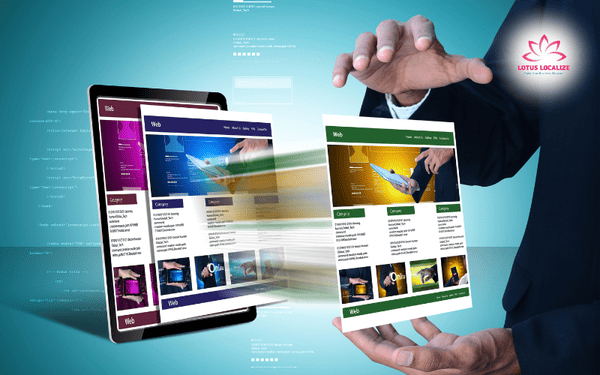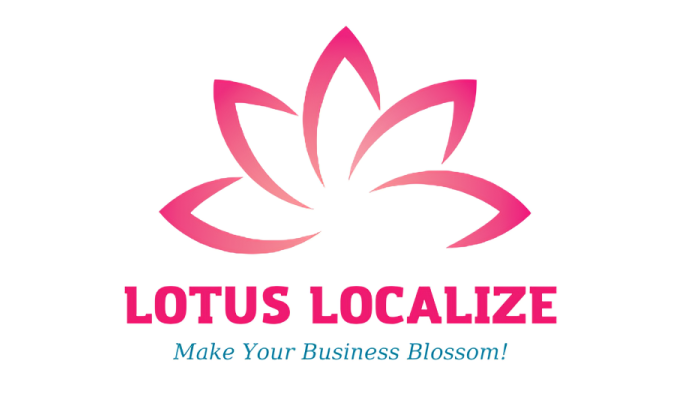
Translation vs localization: Key insights for successful global communication
In today’s hyper-connected world, the ability to communicate effectively across languages and cultures is a non-negotiable skill for businesses and organizations aiming to go global. But crafting a message that resonates universally is not as simple as translating text into a new language. The real challenge lies in connecting with diverse audiences in a way that feels personal and culturally relevant.
This is where translation and localization step into the spotlight. These two processes, while closely related, play distinct roles in bridging language barriers and cultural gaps. For businesses and individuals aiming to succeed globally, understanding the differences and knowing when to use each approach is key to maximizing impact.
Let’s dive deep into the concept of translation vs localization and how these strategies can empower your global communication efforts.
Why is global communication vital in the modern era?
In a world where businesses are increasingly globalized, effective communication across borders is more critical than ever. Customers expect brands to speak their language—not just linguistically but also culturally.

Consider a global e-commerce platform. While customers in Japan might prioritize user-friendly navigation, customers in the U.S. may focus on transparency and detailed reviews. A one-size-fits-all approach won’t suffice; tailored communication is essential.
The impact of successful global communication extends beyond sales. It builds trust, strengthens brand identity, and fosters customer loyalty. By ensuring that your message resonates across diverse markets, you position yourself not just as a global business but as a local ally in every market you serve.
Read more: Avoiding 8 common localization mistakes: Essential steps for success in global markets
What does translation mean? Breaking it down
At its core, translation involves converting text from one language to another while preserving its original meaning. The focus is on accuracy, ensuring that the intended message is communicated clearly without altering its core intent.

Take a product manual as an example. A good translation ensures that instructions are understandable to users in multiple languages. Precision and clarity are crucial in such cases because even minor errors could lead to misinterpretations or misuse of the product.
However, translation isn’t as straightforward as replacing one word with its equivalent in another language. Linguistic nuances, grammar, idioms, and tone all play a role. For instance, the English phrase “break the ice” can’t be translated literally into many languages without losing its figurative meaning. A skilled translator would find an equivalent idiom or phrase that conveys the same idea in the target language.
What is localization? The art of cultural adaptation
While translation focuses on linguistic accuracy, localization goes a step further. Localization adapts content to suit the cultural, linguistic, and practical needs of a specific audience, making the message feel native rather than foreign.

For instance, a global brand entering the Middle Eastern market might adjust its advertising imagery to reflect local customs and attire. Similarly, a video game launched in Japan might include culturally relevant character names, storylines, or gameplay elements to align with Japanese players’ preferences.
Localization isn’t limited to words; it also encompasses visual elements, currency formats, date styles, and even the design of digital interfaces. This process ensures that the content doesn’t just inform but also connects with the target audience on a personal level.
Translation vs. localization: understanding the differences
At first glance, translation and localization may seem interchangeable, but they serve distinct purposes in global communication. Understanding these differences can help businesses and individuals make informed decisions about how to adapt their content for diverse audiences effectively.
Goals of translation
Translation primarily focuses on linguistic accuracy. It ensures that the original message is conveyed clearly and correctly in another language. This process requires a deep understanding of both the source and target languages to maintain the original meaning, tone, and intent of the content.

Key features of translation:
- Accuracy: Retaining the original meaning without distortion.
- Clarity: Ensuring the content is easily understood in the target language.
- Faithfulness: Preserving the tone and style of the original text.
Examples of when translation is needed:
- Legal documents, where precise language is critical to avoid misunderstandings.
- Instruction manuals, where clarity and technical accuracy ensure proper use of products.
- Academic papers, where the original intent must remain intact for global audiences.
Goals of localization
Localization goes beyond words to adapt content for cultural, practical, and emotional relevance. The objective is to ensure the content doesn’t just make sense but feels native to the audience. This process involves cultural adaptation, considering everything from regional customs to visual elements.

Key features of localization:
- Cultural relevance: Adapting idioms, humor, and references to local norms.
- User-centric focus: Adjusting content formats like date, time, currency, and measurement units.
- Emotional connection: Ensuring the tone and visuals resonate with the target audience.
Examples of when localization is essential:
- Marketing campaigns that need culturally tailored slogans and visuals to appeal to local audiences.
- Mobile apps, where user interfaces must align with local language preferences and usability expectations.
- E-commerce websites, which require local currency, payment methods, and culturally appropriate imagery.
Read more: Translator vs interpreter: Unpacking the key differences in language services
Translation vs. localization: How they differ?
While translation ensures that content is understood, localization ensures that it feels relatable and engaging. Consider these comparisons:
| Aspect | Translation | Localization |
| Focus | Accuracy and clarity | Cultural and emotional relevance |
| Scope | Words and meaning | Words, visuals, and cultural adaptation |
| Purpose | To convey information | To build connection and engagement |
| Example | Translating a legal document | Localizing a marketing slogan |
Why you need both translation and localization
Both translation and localization are essential for effective global communication, but their use depends on the type of content, the audience, and your goals. Here’s when you might use each approach:
- Use translation when:
- Accuracy is the top priority, such as with technical manuals or academic content.
- The primary goal is to convey information without cultural adaptation.
- The content doesn’t require emotional or cultural engagement.

- Use localization when:
- The content is customer-facing and needs to resonate emotionally (e.g., advertising campaigns).
- Cultural preferences and sensitivities play a role in user experience (e.g., mobile apps).
- You want to build a deep connection with local audiences, such as through personalized branding.
By combining translation for linguistic precision and localization for cultural relevance, you ensure that your message not only informs but also inspires and connects.
When to choose translation vs localization
Choosing between translation and localization depends on the purpose of your content and the audience you want to reach. Both approaches play vital roles in ensuring effective global communication, but they cater to different needs. Understanding when to use each—or when to combine them—can help you achieve your communication goals more effectively.
When translation is the right choice?
Translation is best suited for scenarios where precision and clarity are paramount. The focus is on converting text from one language to another while maintaining the original meaning, tone, and style. It’s ideal for content where cultural adaptation isn’t necessary.

Key characteristics of content suited for translation:
- Accuracy is critical: The content must be exact and free of ambiguities.
- Informational focus: The purpose is to convey clear and factual details.
- Technical or legal nature: Documents often have strict requirements for precision.
Examples of when to choose translation:
- Technical manuals: Ensuring instructions are accurate and usable across languages.
- Legal contracts: Maintaining legal integrity with precise terminology.
- Medical reports: Providing clear, accurate, and unambiguous details.
When localization is the best approach?
Localization goes beyond translation to adapt content for a specific culture, audience, or region. This approach is essential for content where cultural nuances, preferences, and emotional resonance play a significant role in engaging the audience.

Key characteristics of content suited for localization:
- Cultural sensitivity: The audience expects content that aligns with local norms and values.
- Engagement-focused: The goal is to create an emotional connection and encourage interaction.
- Brand-driven: Content represents your brand and must feel relatable to the target market.
Examples of when to choose localization:
- Marketing campaigns: Adapting slogans, imagery, and messaging to align with cultural norms.
- Websites and apps: Adjusting layouts, visuals, and user experiences for specific regions.
- E-commerce platforms: Including local currencies, payment methods, and region-specific content.
Read more: Why pharma translation matters in today’s global healthcare landscape
When to combine translation and localization?
Many projects require a mix of both translation and localization to achieve the best results. While translation ensures linguistic accuracy, localization tailors the content to resonate with the audience culturally and emotionally.

Examples of combining translation and localization:
- Mobile apps: Translating text for linguistic clarity while localizing interface design for cultural relevance.
- Software interfaces: Using translation for error messages but localizing date formats and functionality.
- Global branding: Translating product descriptions and localizing taglines to suit different markets.
Making the right choice between translation and localization
To decide between translation and localization, consider the following factors:
- Purpose: Is your goal to inform or to engage emotionally?
- Audience: Does your target audience expect cultural adaptation?
- Content type: Is the content technical, or is it customer-facing and brand-driven?
By understanding the unique strengths of translation and localization, and when to use them individually or together, you can ensure your content not only communicates effectively but also resonates deeply with your audience.
Why Lotus Localize is your trusted partner for translation and localization
At Lotus Localize, we understand that effective global communication requires more than just accurate translations—it demands cultural expertise, precision, and a commitment to excellence. That’s why we offer both translation and localization services tailored to your unique needs.
- Translation services: Our team of skilled linguists ensures that your content is translated with the highest level of accuracy, maintaining its original meaning and intent. From legal documents to technical manuals, we handle complex projects with ease and professionalism.
- Localization services: Our localization experts go beyond language to adapt your content for specific markets. Whether it’s a website, app, or marketing campaign, we ensure your message feels native and relatable to your target audience, enhancing engagement and building trust.

With Lotus Localize, you don’t just reach your audience—you connect with them. Whether you’re launching a product, expanding into new markets, or strengthening your global presence, our services ensure your message resonates every time.
In the battle of translation vs. localization, there is no one-size-fits-all winner. Both are indispensable tools for businesses and organizations striving to succeed in a globalized world. Translation ensures that your message is clear, precise, and faithful to its original meaning, while localization takes it a step further, tailoring the content to resonate deeply with the cultural and emotional expectations of your target audience.
The key to global communication lies in understanding when to use each approach—or when to combine them. Whether you need the accuracy of translation, the cultural nuance of localization, or a seamless blend of both, choosing the right strategy ensures your content transcends language barriers and connects meaningfully with audiences worldwide.
At Lotus Localize, we specialize in helping brands unlock their global potential. With expert translation and localization services, we ensure your message is not only heard but also embraced across borders.
Ready to take your global communication to the next level?
If you have any questions or need assistance with translation services: document translation, book translation, or localization services such as: app localization, game localization, software localization, website localization,… please contact Lotus Localize immediately at 0866 224 968 or visit the website: lotus-localize.com for advice on the best solutions!
Contact Lotus Localize today to craft content that informs, inspires, and connects with the world. Let’s make your brand a global success story!
QUALITY PROMISE
Lotus Localize offers consistent, high-quality service delivery in all customer engagements. Our in-house translators and staff adhere to well-established business processes, allowing us to communicate properly, deliver on time, and surpass client expectations.












